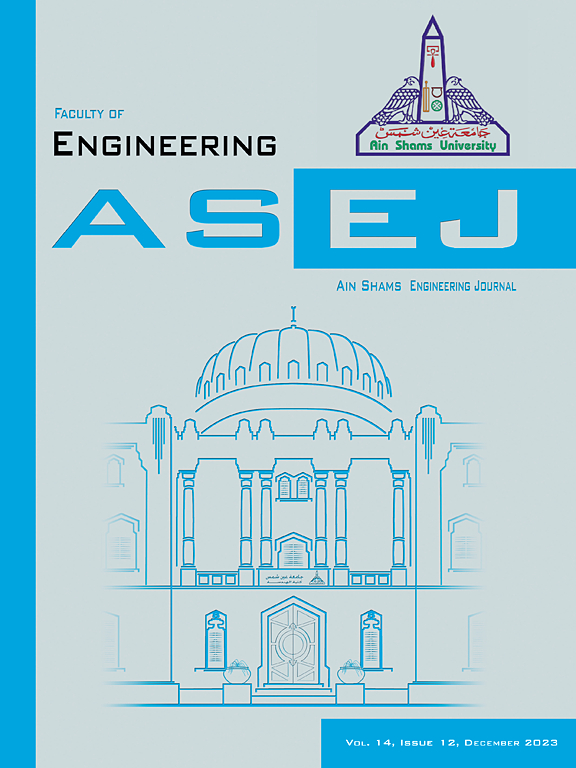危重医院单元综合设计评价方法:结合空间句法与虚拟现实提高运行效率
IF 5.9
2区 工程技术
Q1 ENGINEERING, MULTIDISCIPLINARY
引用次数: 0
摘要
危重病房的设计对医院的运营效率起着至关重要的作用。本文提出了一种结合空间句法分析(SSA)和虚拟现实(VR)仿真的综合评价方法,用于施工前的作战性能评估。SSA使用标准化加权可访问性指数(NWAI)定量识别可访问性模式,而VR让用户沉浸在基于场景的任务中,以收集对操作流程的定性见解。此外,引入了一种新的“关键级别”度量,根据操作重要性对功能空间进行优先排序。NWAI和关键性分数的交叉分析为检测指导评估过程的空间失调提供了基线。该方法在开罗纳斯尔市医院拟议的急诊科改造中进行了测试,来自不同医学专业的6名经验丰富的工作人员参与了测试。调查结果揭示了关键的瓶颈:血液实验室的NWAI得分最高(0.778),用户评分最低(3.0),表明不一致。成像区被标记为狭窄的走廊、低能见度和拥挤——尽管有适度的可达性指标——突出了几何分析的局限性。相比之下,复苏室和Triage在NWAI上得分低(≤0.313),在关键程度上得分高,证实了一致性。本研究的贡献是一种将空间分析与经验验证相结合的方法,支持基于证据的、以用户为中心的受限医疗保健装修设计。本文章由计算机程序翻译,如有差异,请以英文原文为准。
An integrated design evaluation method for critical hospital units: Combining space syntax and virtual reality for operational efficiency
The design of Critical Hospital Units plays a critical role in operational efficiency. This study presents an integrated evaluation method that combines Space Syntax Analysis (SSA) and Virtual Reality (VR) simulation to assess operational performance before construction. SSA quantitatively identifies accessibility patterns using a Normalized Weighted Accessibility Index (NWAI), while VR immerses users in scenario-based tasks to gather qualitative insights on operational flow. Furthermore, a novel ’Cruciality Level’ metric was introduced to prioritize functional spaces based on operational importance. Cross-analysis of NWAI and Cruciality scores provided a baseline for detecting spatial misalignments that guided the evaluation process. The method was tested on a proposed ED renovation at Nasr City Hospital, Cairo, with six experienced staff from various medical specialties. Findings revealed key bottlenecks: the Blood Lab scored the highest NWAI (0.778) and lowest user rating (3.0), indicating misalignment. The Imaging Zone was flagged for narrow corridors, low visibility, and crowding—despite moderate accessibility metrics—highlighting the limits of geometric analysis alone. In contrast, the Resuscitation Room and Triage scored low on NWAI (≤0.313) and high in Cruciality, confirming alignment. The contribution of this study is a method that bridges spatial analytics with experiential validation, supporting evidence-based, user-centered design in constrained healthcare renovations.
求助全文
通过发布文献求助,成功后即可免费获取论文全文。
去求助
来源期刊

Ain Shams Engineering Journal
Engineering-General Engineering
CiteScore
10.80
自引率
13.30%
发文量
441
审稿时长
49 weeks
期刊介绍:
in Shams Engineering Journal is an international journal devoted to publication of peer reviewed original high-quality research papers and review papers in both traditional topics and those of emerging science and technology. Areas of both theoretical and fundamental interest as well as those concerning industrial applications, emerging instrumental techniques and those which have some practical application to an aspect of human endeavor, such as the preservation of the environment, health, waste disposal are welcome. The overall focus is on original and rigorous scientific research results which have generic significance.
Ain Shams Engineering Journal focuses upon aspects of mechanical engineering, electrical engineering, civil engineering, chemical engineering, petroleum engineering, environmental engineering, architectural and urban planning engineering. Papers in which knowledge from other disciplines is integrated with engineering are especially welcome like nanotechnology, material sciences, and computational methods as well as applied basic sciences: engineering mathematics, physics and chemistry.
 求助内容:
求助内容: 应助结果提醒方式:
应助结果提醒方式:


